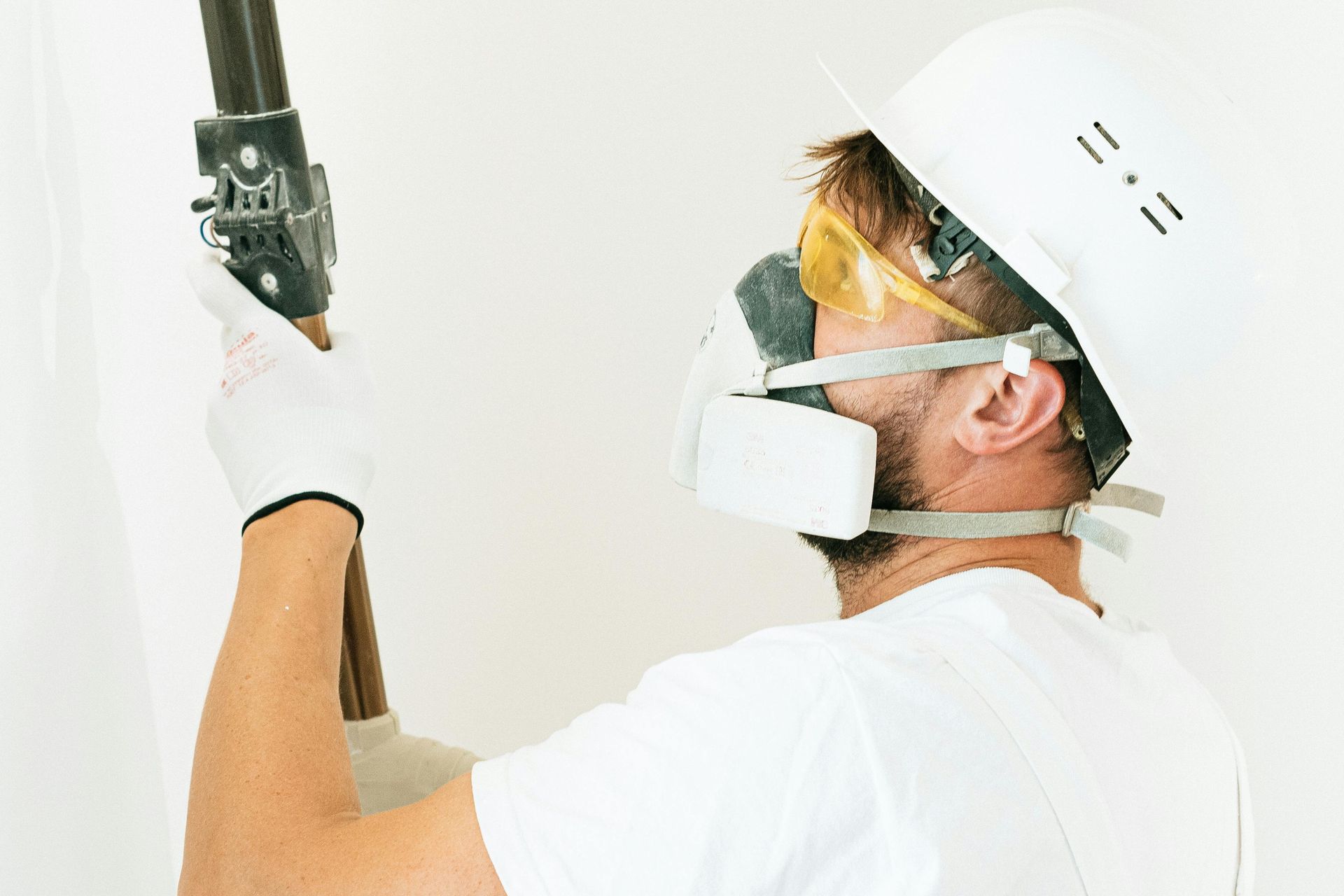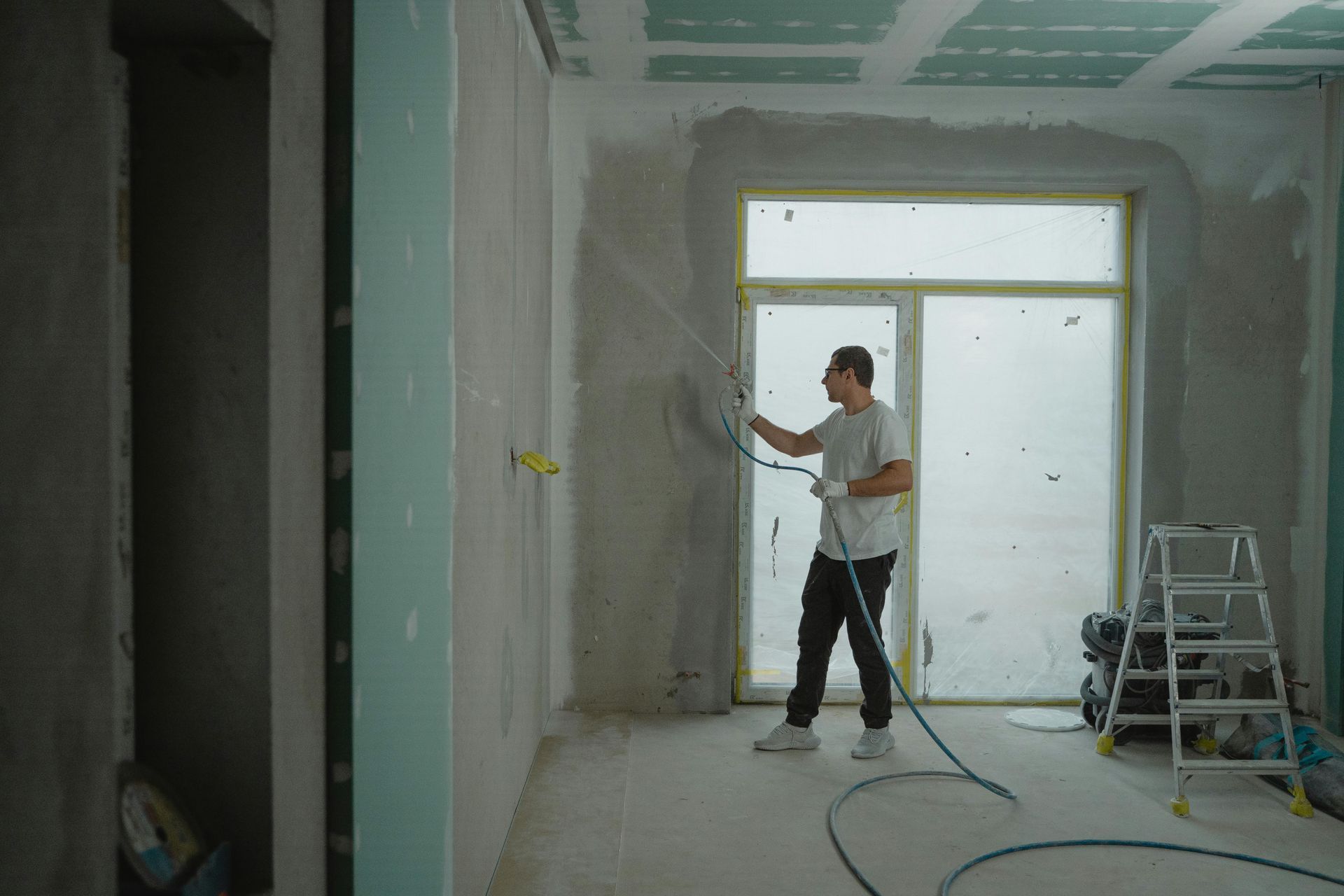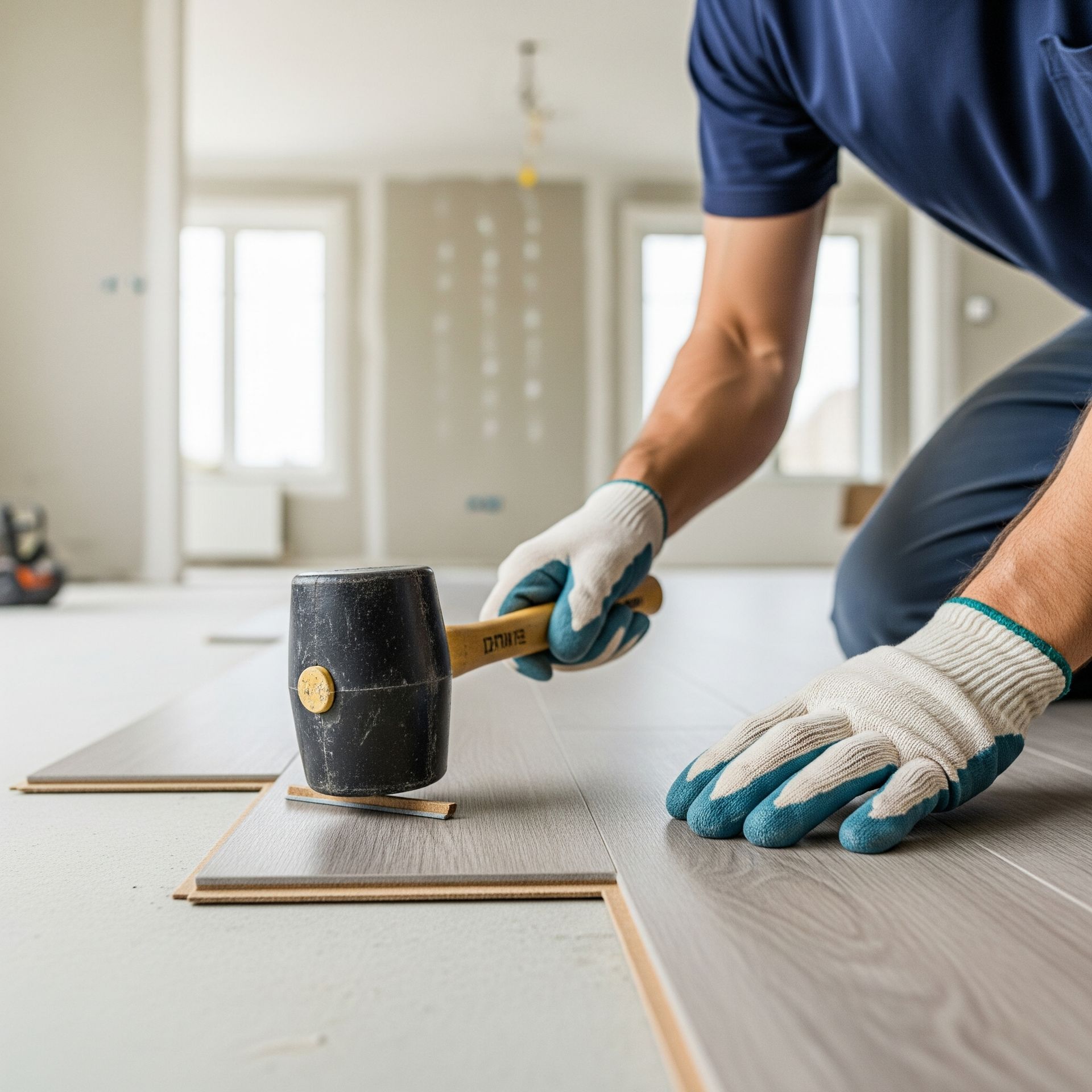A fresh coat of paint can completely transform the look and feel of your home. It can brighten your space, showcase your style, and even improve your mood. But how do you know when it’s time to repaint your interior walls? Many Georgia homeowners wait until their walls show obvious wear. By then, the paint may already be cracked, faded, or stained.
Repainting your home’s interior is more than an aesthetic upgrade; it’s an important part of what keeps your home clean, healthy, and protected. Whether you’re tackling a full renovation with the help of professional service providers or simply refreshing a few rooms yourself, learning the signs of aging paint can help you plan ahead, avoid damage, and maintain a beautiful home environment year-round.
Key Takeaways
- Peeling, cracking, or bubbling paint means your walls need immediate attention.
- Faded or discolored paint is often caused by sunlight exposure or aging.
- Stains and scuff marks that won’t come off signal worn-out paint.
- Style changes make repainting an easy way to refresh your living space.
- Paint older than five to seven years is likely due for replacement.
- Low-VOC paints can improve air quality and reduce lingering odors.
1. Faded or Discolored Paint
Over time, even high-quality paint fades. If your walls once looked rich and vibrant but now seem dull or uneven, sun exposure is likely to blame. Ultraviolet light gradually breaks down the pigments in paint, especially in rooms with large windows, skylights, or bright artificial lighting.
You might notice:
- One wall appearing noticeably lighter than others
- Yellowing near ceilings or trims
- Rooms that look dim despite natural light
Why it matters:
Fading is more than a visual issue. It signals that the paint’s protective layer has weakened.
Professional house painters in Lawrenceville, GA, recommend using fade-resistant or UV-protective paints for rooms with high sunlight exposure.
Pro Tip: Choose lighter shades or neutrals like ivory, mist gray, or pale beige if your home gets strong sunlight. These hues tend to maintain their brightness longer than dark colors.
2. Peeling, Cracking, or Bubbling Paint
If you notice peeling, cracking, or bubbling, it’s time to act. These issues often stem from moisture, poor surface preparation, or low-quality paint. Once paint separates from the wall, it exposes the surface beneath to humidity, mold, and mildew.
What causes these problems:
- High humidity in kitchens or bathrooms
- Painting over dirt or glossy finishes without sanding
- Using cheap paint or skipping primer
- Water leaks from ceilings or pipes
How to fix it:
Before repainting, identify and fix the source of moisture. Sand off the damaged areas, apply primer, and use a durable, moisture-resistant paint. Skilled
painters in Lawrenceville, GA, often apply specialized sealants or primers designed for humid climates to prevent future peeling.
3. Persistent Stains and Scuff Marks
Scuffs, fingerprints, and smudges are part of everyday life, especially in high-traffic areas like hallways, entryways, and kitchens. But when stains stop coming off no matter how carefully you clean, repainting becomes the only lasting solution.
Common types of stubborn stains:
- Grease or oil marks in cooking spaces
- Smoke discoloration near stoves or fireplaces
- Water stains from plumbing leaks
- Crayon, ink, or shoe scuffs in children’s rooms
Solution:
Opt for washable, stain-resistant paint finishes such as eggshell, satin, or semi-gloss. These finishes stand up to cleaning better than flat or matte paint and help keep walls looking fresh longer.
Pro Tip: If you’re repainting high-use areas, consider investing in premium, scrubbable paints. While they cost more upfront, they reduce maintenance and extend the lifespan of your paint job.
4. Mold or Mildew Growth
Dark spots, musty odors, or discolored patches on your walls indicate mold or mildew. These are most common in bathrooms, basements, or poorly ventilated rooms.
Steps to take before repainting:
- Scrub the area with a mold-killing cleaner or diluted bleach solution.
- Allow the surface to dry completely.
- Apply a high-quality, mold-resistant primer.
- Repaint using moisture-resistant paint.
Professional house painters in Buford often use antimicrobial paints that help prevent future mold growth. Addressing the problem early not only protects your walls but also safeguards your health.
Warning: Painting directly over mold only hides it temporarily. Mold can continue growing underneath and cause long-term damage.
5. You’re Tired of the Color or Style
Even without visible wear, a room can feel outdated simply because your tastes or furniture have changed. Repainting gives you the chance to redefine your home’s atmosphere without a major renovation.
Current color trends:
- Soft neutrals: timeless and easy to pair with any décor
- Earthy tones: warm, inviting, and great for cozy living spaces
- Accent walls: add personality without overwhelming a room
- Cool blues and greens: calming tones ideal for bedrooms or offices
Consulting professional house painters in Lawrenceville helps you choose the right palette based on lighting, room size, and mood.
Fun fact:
According to color psychology, blues and greens promote relaxation, while yellows and warm tones stimulate creativity and energy.
6. You’re Preparing to Sell or Rent Your Home
If you plan to sell or rent your home, fresh paint can make a dramatic difference in first impressions. A clean, neutral palette helps buyers envision themselves in the space and signals that the property is well-maintained.
| Room | Ideal Colors | Reason |
|---|---|---|
| Living Room | Light gray, beige | Creates warmth and openness |
| Bedrooms | Soft blue or muted green | Promotes calm and relaxation |
| Kitchen | Cream or light taupe | Feels fresh and clean |
| Bathrooms | Off-white or pale gray | Suggests cleanliness and space |
Companies offering professional house painting in Lawrenceville can recommend colors proven to appeal to buyers and even enhance perceived home value.
7. Your Paint Is More Than 5–7 Years Old
Even if your walls look fine, paint naturally degrades over time. Most interior paints last five to seven years, depending on traffic, humidity, and the quality of materials used.
| Room Type | Ideal Repainting Cycle | Notes |
|---|---|---|
| Living & Dining Rooms | 5–7 years | Refresh for color vibrancy |
| Bedrooms | 5 years | More often for kids’ rooms |
| Kitchens & Bathrooms | 3–4 years | Heat and moisture shorten lifespan |
| Hallways | 2–4 years | Frequent scuffs and hand marks |
| Ceilings | 10 years | Repaint if yellowing or water-damaged |
If you can’t remember your last paint job, or if your walls look dull and uneven, then it’s probably time for a fresh coat.
8. Poor Indoor Air Quality and Lingering Odors
Old paint can trap years of odors from cooking, smoke, or pets. Over time, these smells become part of the walls themselves. Repainting with low-VOC or zero-VOC paints can significantly improve air quality and eliminate these unwanted scents.
Benefits of low-VOC paints:
- Safer for children, pets, and allergy sufferers
- Low odor during application and drying
- Eco-friendly formulations reduce harmful emissions
If you’ve recently renovated, moved into an older home, or simply want a healthier environment, repainting with low-VOC paint is an effective upgrade.
Benefits of Repainting Your Interior Walls
Repainting your home is an easy, affordable way to revitalize your space and extend the life of your interior surfaces.
Here’s what a fresh coat delivers:
- Enhanced mood: New colors influence energy and comfort.
- Cleaner air: Removes dust, odors, and allergens trapped in old paint.
- Increased home value: A well-painted home appeals to buyers and renters.
- Better lighting: Fresh paint reflects light, making rooms feel larger.
- Wall protection: Modern paints resist moisture, scratches, and stains.
A professional painting and remodeling project can also help unify your home’s style, ensuring every room flows seamlessly with complementary tones and finishes.
Estimating the Cost to Repaint Interior Walls
The cost to repaint interior walls depends on several factors, including room size, wall condition, paint type, and labor. On average, homeowners in Georgia spend between $2 and $6 per square foot, or $500 to $2,000 per room.
Here’s what affects your total cost:
- Surface preparation: Repairing holes, cracks, or old paint increases labor.
- Paint quality: Premium, washable paints last longer but cost more upfront.
- Ceiling height: Taller walls require additional equipment and time.
- Number of coats: Dark-to-light color changes may need extra layers.
While DIY painting can save money initially, hiring professionals ensures smoother coverage, better color matching, and longer-lasting results, especially if you’re repainting high-traffic or moisture-prone rooms.
Choosing the Right Painter or Contractor
If you’re planning to repaint, selecting the right house painters in Buford or Lawrenceville makes all the difference.
Before hiring, ask:
- Are they licensed and insured?
- Do they offer written estimates and warranties?
- What brands and paint types do they use?
- Can they provide references or photos of past work?
A reputable painter not only ensures quality results but also helps you choose colors, finishes, and maintenance plans tailored to your lifestyle and home design.
Frequently Asked Questions
How do I know if I should repaint or just clean the walls?
If gentle cleaning doesn’t remove stains, or if the paint still looks faded or chalky, repainting is your best option. Cleaning only removes surface dirt, while repainting restores color, texture, and protection.
What kind of paint works best for high-traffic areas?
Satin or semi-gloss finishes are ideal. These durable paints resist scuffs and are easy to wipe clean, making them perfect for hallways, kitchens, and playrooms. Many modern options are also low-VOC for a healthier home.
Can I paint over mildew or mold?
No. Painting over mold traps moisture and worsens the problem. Clean the affected area thoroughly, apply a mold-resistant primer, and repaint using moisture-resistant or antimicrobial paint.
Is there a best season to repaint interior walls?
Spring and fall are ideal because of mild temperatures and low humidity. However, with proper indoor ventilation, you can safely repaint year-round—especially with fast-drying, low-odor paints.
How often should you repaint high-traffic interior walls?
Every 2–4 years is ideal. These areas experience constant wear, so using scrubbable, high-sheen paints helps extend the time between repainting projects.
Final Thoughts
Repainting your home’s interior is one of the simplest yet most transformative maintenance tasks you can do. Beyond aesthetics, it helps protect your walls, boost air quality, and enhance your overall comfort.
If your walls show peeling, fading, or stubborn stains—or if you just want a change of scenery—contact professional house painters in Buford or Lawrenceville, GA. With the right color choices, preparation, and finish, your home can look and feel brand new again.
A quality painting and remodeling project doesn’t just refresh your space; it reinvigorates how you experience it every day.
Refresh your space today—schedule a professional interior repaint with our expert painters and remodelers and bring new life to your home!
Reference:
https://www.healthierhomes.com/post/low-voc-vs-no-voc-paint?srsltid=AfmBOorcGdnsiE13iYJRNdtdon5pV0-1xYm9_O5oa7hoKsKyW2fP0oTb




